
Omni Bedford Springs Resort is a resort hotel outside of Bedford, Pennsylvania. Established in 1806, it is one of last and best-preserved of 19th-century resort hotels based around mineral springs. The hotel was documented in 2005 by the Historic American Buildings Survey (HABS). Omni Bedford Springs Resort & Spa is a member of Historic Hotels of America, the official program of the National Trust for Historic Preservation. The resort is part of the Omni Hotels & Resorts brand, based out of Dallas, Texas. A portion of the resort property, including the hotel, golf course, and spring areas, was designated a National Historic Landmark District in 1984.

The Greenbrier is a luxury resort located in the Allegheny Mountains near White Sulphur Springs in Greenbrier County, West Virginia, in the United States.
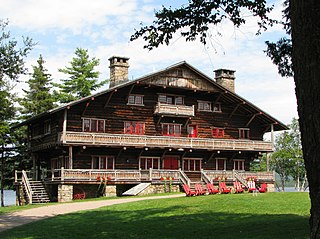
Great Camp Sagamore is one of several historic Great Camps located in the Adirondack Mountains of northern New York State.

The Richardson Olmsted Campus in Buffalo, New York, United States was designated a National Historic Landmark in 1986. The site was designed by the American architect, Henry Hobson Richardson, in concert with the famed landscape team of Frederick Law Olmsted and Calvert Vaux in the late 1800s, incorporating a system of enlightened treatment for people with mental illness developed by Dr. Thomas Story Kirkbride. Over the years, as mental health treatment changed and resources were diverted, the buildings and grounds began a slow deterioration. In 2006, the Richardson Center Corporation was formed to restore the buildings.
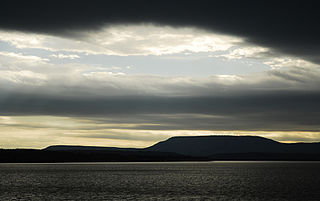
Located near Dardanelle, Arkansas and rising 1,350 feet (410 m) above the mountain valleys of west central Arkansas, Mount Nebo has a view of 34,000 acres (140 km2) Lake Dardanelle, the Arkansas River and the surrounding mountain ridges. Atop this biblically named plateau, fringed by the Ouachita National Forest, is Mount Nebo State Park. Developed as a resort area in the late 19th century, it became a state park in 1928, its early development spearheaded by the Civilian Conservation Corps. Park activities include hiking, camping, and other outdoor pursuits.

The University Club is an eight-story building of the University of Pittsburgh designed by Henry Hornbostel and completed in 1923 that is a contributing property to the Schenley Farms Historic District on the school's campus in Pittsburgh, Pennsylvania, United States. It serves as a faculty club with publicly accessible dining, banquet, and conference facilities, while the upper four floors serve as housing for the families of out-of-town hospital patients.

Western State Hospital, called Western State Lunatic Asylum in its early years, is a hospital for the mentally ill in Staunton, Virginia, which admitted its first patient on July 24, 1828.

Asilomar Conference Grounds is a conference center built for the Young Women's Christian Association (YWCA). It is located east of what was known as Moss Beach on the western tip of the Monterey Peninsula in Pacific Grove, California. Between 1913 and 1929 architect Julia Morgan designed and built 16 of the buildings on the property, of which 11 are still standing. In 1956 it became part of the State Division of Beaches and Parks of California's Department of Natural Resources, and Moss Beach was renamed Asilomar State Beach. Asilomar is a derivation of the Spanish phrase asilo al mar, meaning asylum or refuge by the sea. It is the native homeland of the Rumsen Ohlone people.

The Dearborn Inn, A Marriott Hotel, is a luxurious historic hotel, conceived by Henry Ford, who saw a need for food and accommodations for visitors flying into the nearby Ford Airport, making it one of the first airport hotels. It is located in Metro Detroit at 20301 Oakwood Boulevard in the suburban city of Dearborn, Michigan near The Henry Ford and the world headquarters building of Ford Motor Company. Albert Kahn designed the Dearborn Inn in the Georgian architectural style. The Dearborn Inn is owned by Ford Motor Land Development Corporation and managed by Marriott International.
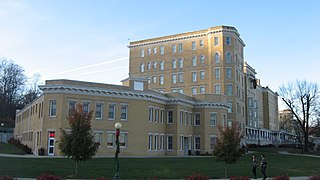
The French Lick Springs Hotel, a part of the French Lick Resort Casino complex, is a major resort hotel in Orange County, Indiana. The historic hotel in the national historic district at French Lick was initially known as a mineral spring health spa and for its trademarked Pluto Water. During the period 1901 to 1946, when Thomas Taggart, a former mayor of Indianapolis, and his son, Thomas D. Taggart, were its owners and operators, the popular hotel attracted many fashionable, wealthy, and notable guests. The resort was a major employer of African-American labor, which mostly came from Kentucky.

Lexington House is an historic riverfront hotel located in Catskill Park on the south side of the Schoharie Creek in the Town of Lexington in Greene County, New York. Lexington House was built about 1883 as a middle class resort and is a large, three story frame building arranged in a modified "L" shaped configuration. It features Italianate and Eastlake design elements. Also on the property is the Morse Inn, a former ice house, wagon house and shed. The River Theater stood on the property until about 2011 when it was severely damaged. Its construction coinciding with the development of the Catskill and Tannersville Railway, the Lexington House is a rare surviving example of mid-scale, railroad-era resort architecture. The Lexington House, featuring thirty rooms, advertised facilities for 50-60 guests. Architecturally, the Lexington House embodies a variety of distinctive characteristics commonly associated with this type of resort architecture. On the exterior the most salient features associated with the type are the broad verandah and second-story balconies. Expansive porches and open-air balconies were an essential feature of the resort hotel, providing guests with vistas of the surrounding wilderness and pleasant public spaces for social gatherings. Verandahs also served as sanitary and therapeutic retreats from which to enjoy the healthful and moral atmosphere of nature, reflecting the popularity of resorts not only for pleasure and recreational activity but also for escapes from the crowded, disease-ridden and immoral conditions of the suddenly industrialized cities of the northeast.

Green Springs was built in the late 18th century on lands in Louisa County, Virginia assembled by Sylvanus Morris. His son Richard (c.1740-1821) developed 1,746 acres (707 ha) near the mineral springs that gave the property its name and built the two-story frame house. The property stands in an unusually fertile region of central Virginia, surrounded by a number of 18th and 19th century farms and plantations. The district has been designated a National Historic Landmark district, comprising about 14,000 acres (5,700 ha) under scenic easement protection.

The Massanetta Springs Historic District is a retreat in Rockingham County, Virginia, administered by the Presbyterian Synod of Virginia, and chiefly associated with the Massanetta Springs Summer Bible Conference Encampment. The district includes the Hotel (1910), Hudson Auditorium (1922) and Camp Massanetta (1955–56). A Methodist camp existed at the site, originally known as Taylor's Springs, from 1816.
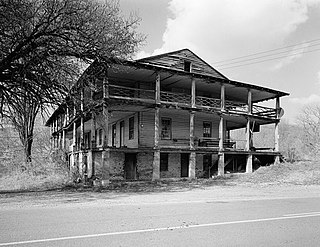
Sweet Chalybeate Springs, also known as the Red Sweet Springs, Sweet Chalybeate Hotel and Sweet Chalybeate Springs Lodge, is a historic resort hotel complex located at Sweet Chalybeate, Alleghany County, Virginia. It dates to the 1850s, and consists of a main building, guest ranges, and cottages all fronted with two-level porches. There are a total of eight contributing buildings and one contributing structure. The main building is a gable roof, weatherboarded, frame structure 12 bays long and 2 bays deep. The resort developed around springs flowing undisturbed from the bottom of a small rock bluff. Sweet Chalybeate suffered decline and finally closed its doors in 1918.

Yellow Sulphur Springs is a historic resort complex located near Christiansburg, Montgomery County, Virginia. The complex includes the main building; proprietor's cottage (1870s); three rows of cottages formerly denominated the Petersburg, Memphis, and Spring Hill rows; a carriage house(no longer standing); and the site of a man-made lake and 19th century bowling alley. Though established in the 1700s, the original section of the current main building was built about 1810, and expanded in 1840. The inn was mentioned in local records as far back as the late 1700s, before nearby Blacksburg, Virginia was established. It is a two-story, eight bay frame hotel building set upon a full basement. The building features a two-story portico with square Roman Doric piers stretches the length of the weatherboarded structure. The cold mineral spring water on the property is rich in minerals and doctors prescribed it to their patients.
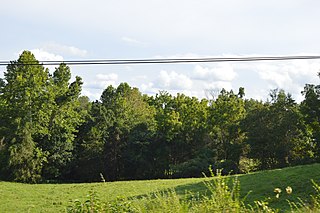
Orange Springs is a historic 52-acre home, farm complex, and former resort spa located near Unionville, Orange County, Virginia, just east of the intersection of US Route 522 and Route 629, located along Route 629, overlooking Terry's Run.

Rockbridge Alum Springs Historic District, also known as Jordan Alum Springs, and now known as Rockbridge Alum Springs - A Young Life Camp, is a historic 19th-century resort complex and national historic district near California, Rockbridge County, Virginia, United States. The district encompasses 16 contributing buildings, 10 contributing sites, and 4 contributing structures dating primarily to the 1850s, and associated with the operations of the Rockbridge Alum Springs, a popular 19th- and early-20th century mountain resort. The buildings are the barroom, store/post office, Montgomery Hall, the Gothic Building, the Alum Springs Pavilion, two cottages of Baltimore Row, the Ladies Hotel, four cottages of Kentucky Row, Jordan's House, a servant's quarters, a slave quarters, and a storehouse. The remaining structures are a well and the stone spring chambers and gazebo and bandstand of the Jordan Alum Springs. The sites are primarily those of demolished cottages. It is one of the best-preserved antebellum springs resort complexes in Virginia. The resort remained in operation until 1941. It is currently owned and operated by Young Life, a non-denominational Christian youth organization, and has been operated as a year-round campground since 1992.

Orkney Springs Hotel is a historic resort spa complex located at Orkney Springs, Shenandoah County, Virginia. The oldest building, known as Maryland House, was built in 1853, and is a two-story, rectangular stuccoed frame building. It is faced on all sides by double galleries. The main hotel building, known as Virginia House, was built between 1873 and 1876. It is a four-story, stuccoed frame, "H"-shaped building measuring 100 feet by 165 feet and features a three-story verandah. The hotel contains 175 bedrooms. The remaining contributing resources are the three-story Pennsylvania House (1867), seven identical two-story, six-room, hipped roof cottages, and a small columned pavilion located next to the mineral springs.

The Hopewell High School Complex, also known as James E. Mallonee Middle School, is a historic former school campus located at 1201 City Point Road in Hopewell, Virginia, United States. Contributing properties in the complex include the original school building, athletic field, club house, concession stand, press box, Home Economics Cottage, gymnasium and Science and Library Building. There are two non-contributing structures on the property.

The Cavalier Hotel is a historic hotel building at 4200 Atlantic Avenue in Virginia Beach, Virginia. The seven-story building was designed by Neff and Thompson with a Y-shaped floor plan and was completed in 1927. Most of its hotel rooms featured views of the Atlantic Ocean, and all had private bathrooms. The hotel also featured dining facilities and opportunities for shopping, as well as amenities such as swimming pools that are now common features of modern hotels.

























